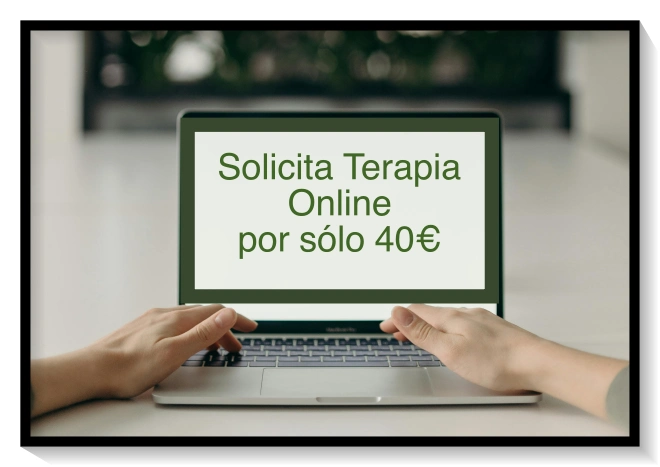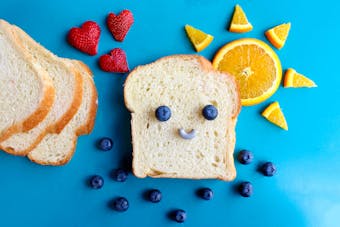Have you ever found yourself eating without real hunger, almost automatically, trying to soothe something inside you that you can’t even name? Have you opened the fridge again and again, nibbling on cheese, cookies, snacks, and then thought: “Why did I do this again?”
This happens in many ways and intensities, but more and more people recognize themselves in this cycle. It’s often called food addiction, a controversial but useful term to describe the compulsive, almost addictive relationship some people have with food. Although it’s not officially listed as a diagnosis in manuals like the DSM-5, binge eating disorder is, and shares many components with what we popularly call food addiction.
More Than a Willpower Problem
The first thing to understand is that it’s not simply a matter of lack of self-control. This kind of relationship with food is the result of a complex interaction between our brain, emotions, personal history, and the social context we live in.
Foods rich in sugar, fat, and salt stimulate dopamine release in the brain, a neurotransmitter related to pleasure and motivation. This same dopamine system is involved in substance addictions. That’s why eating can become a quick way to feel relief when anxiety, sadness, or emptiness strikes.
There’s also the learning component. If we repeatedly eat to calm or reward ourselves, the brain builds the pattern: “I feel bad → I eat something tasty → I feel better (for a moment),” reinforcing this cycle.
The Hidden Triggers of Food Addiction
Many times we aren’t aware of what’s really triggering our urge to eat. It might show up after an emotional event: an argument, a stressful day, the loneliness of night, boredom, or even after receiving a compliment we don’t know how to integrate.
Other times, it’s tied to overly restrictive diets. Ironically, trying to control what we eat too strictly leads to rebound effects: the body and brain interpret scarcity, ramping up the drive for high-calorie foods. This has ancient biological roots designed to protect us from famine.
So if you’ve spent years on strict diets, your internal system might be overstimulated, reacting with powerful urges at the slightest opportunity.
How to Start Changing: Keys to Treat Food Addiction
Treating food addiction goes far beyond “eat less and exercise.” Below are some strategies drawn from psychology, including Cognitive-Behavioral Therapy (CBT), Acceptance and Commitment Therapy (ACT), and mindfulness-based approaches.
1. Observe Your Patterns Without Judgment
Try a simple experiment: keep a journal for a few days of when you eat, what you eat, and how you feel before and after. Don’t count calories—focus on the emotional and situational context. Do you eat more when you’re alone? After work? When you’re angry or sad?
Watching yourself without guilt helps you understand what role food currently plays in your life.
2. Distinguish Between Physical and Emotional Hunger
Ask yourself: What kind of hunger is this?
- Physical hunger: builds gradually, your stomach feels empty, any food sounds good, and it fades when you eat.
- Emotional hunger: appears suddenly, involves cravings for specific foods (usually sweet or salty), doesn’t fade even if you’ve just eaten, and often brings guilt afterward.
Pausing to ask yourself this breaks the automatic pilot and gives you a chance to choose differently.
3. Learn to Regulate Your Emotions in Other Ways
If you use food as anesthesia, you’ll need to build a new “emotional toolkit.” What other activities can soothe or comfort you? Some ideas:
- Call a friend or family member who listens without judging.
- Take a warm bath or mindful shower, feeling the water on your skin.
- Go for a walk without a goal, just to move your body.
- Do slow breathing or a brief guided meditation.
- Write down what you’re feeling, even unfiltered.
Over time, your brain will learn new routes to relief that don’t always involve food.
4. Practice Mindful Eating
Many binges happen almost unconsciously: in front of the TV, with your phone, reading or even working. Eating mindfully means sitting down without distractions, looking at your plate, smelling it, savoring each bite, and noticing how your stomach feels. This strengthens your connection to internal signals of fullness and enjoyment.
You may find you need much less food to feel satisfied when you eat this way.
5. Soften Self-Criticism and Grow Compassion
One of the biggest drivers of food addiction is the guilt-punishment loop: you eat impulsively, then harshly criticize yourself, which creates more distress... that you try to soothe by eating again.
Starting to speak kindly to yourself, recognizing that you’re coping with something hard, lowers internal stress. You might repeat: “I’m doing the best I can with the resources I have. This doesn’t define me as a person.”
When to Seek Professional Help
Many people improve on their own with these steps, but others need specialized support. If your relationship with food causes you distress, interferes with your life, or feels out of control, seeing a psychologist can be the greatest act of self-care.
In therapy, you’ll work to:
- Explore the emotional and relational roots of your connection to food.
- Identify and challenge rigid or perfectionistic thoughts (“if I don’t do everything perfectly, I’m a failure”).
- Build skills to tolerate difficult feelings without compulsive eating.
- Examine past wounds that may drive your use of food as protection.
Sometimes a multidisciplinary team, including nutritionists or doctors trained in eating disorders, helps give a holistic approach.
The Role of Your Body and Movement
Physical activity has huge value—not as punishment or to “burn calories,” but to process emotions, connect with pleasurable sensations, and regulate your nervous system.
It doesn’t have to be intense: dancing at home, stretching, walking in a park, doing gentle yoga, or simply taking the stairs mindfully can reconnect you to bodily joy, something often damaged by food struggles.
Real Stories: When Food Stops Being the Enemy
Clara, 37, shared in therapy: “Since I was 15, I’ve been on diets. I lost and gained the same weight ten times. Every time I felt bad, my brain said, ‘I need chocolate now.’ But then came the guilt, the tears, the self-hate. In therapy, I learned it wasn’t really about food: I was covering up my loneliness, my insecurities, my fear of not being enough. Slowly, by eating more mindfully and letting myself feel, the urgency faded. Today, food is a nice part of my life, not a fight.”
Like Clara, thousands of people transform that painful relationship. It’s a process, with ups and downs, but deeply freeing.
A Path of Self-Knowledge, Not a Battle
Treating food addiction isn’t about banning foods or imposing strict control. It’s about knowing your emotions, your needs, and your story. Learning to handle discomfort without numbing it with food. And above all, starting to see yourself with compassion.
When you make peace with yourself, eating returns to what it was meant to be: a way to nourish, enjoy, and connect, not a battlefield.
In Summary
- Food addiction has biological, emotional, and social roots. It’s not just lack of willpower.
- Spotting triggers and practicing mindful eating are powerful tools.
- Regulating your emotions with other strategies expands your freedom.
- Self-criticism fuels the problem; self-compassion heals it.
- If you can’t do it alone, seeking psychological help is an act of courage.
Want to Take the Next Step?
If you see yourself in this article, don’t just stop at reading. Try writing today a list of activities that comfort you without food. Or choose one meal to eat with full attention, without distractions. Small steps that, with consistency, transform your relationship with food... and with yourself.
Remember: you are not the problem—you’re just seeking a solution that hasn’t always been the best fit. There are kinder ways to calm what hurts.


